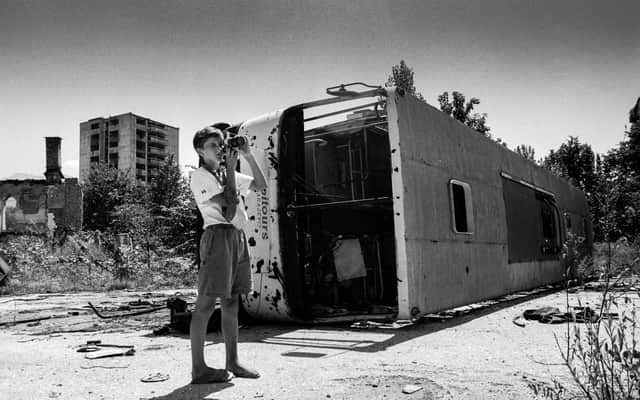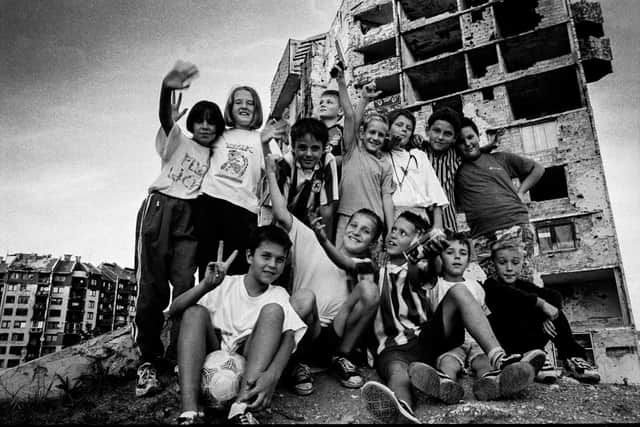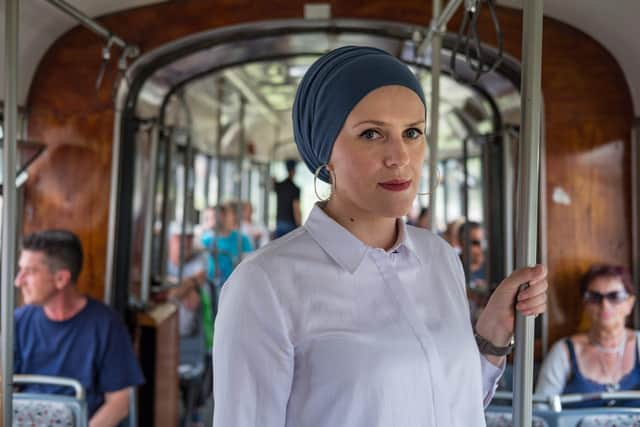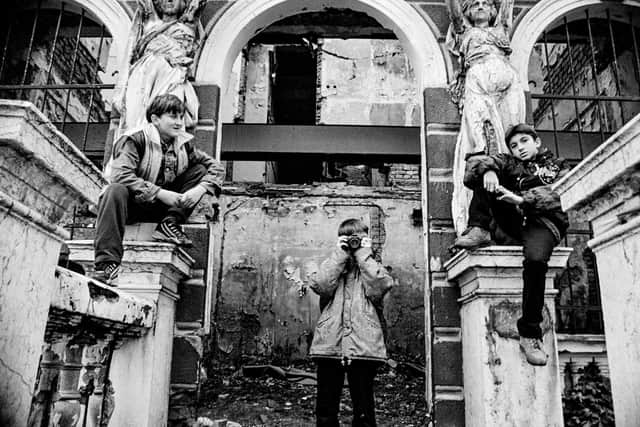Scottish photographer reunites with orphans for 25th anniversary of Bosnian war


Now, a quarter of a century after the end of the Bosnian War, Chris Leslie has reunited with the children he taught in the war-ravaged city of Sarajevo.
The Bafta Scotland award-winning photographer and documentary filmmaker has unveiled a striking new visual arts project marking the 25th anniversary of the Dayton agreement, which struck an uneasy peace in the region.
Advertisement
Hide AdAdvertisement
Hide AdAs part of the initiative, which includes a book of Mr Leslie’s images and a coming exhibition, Mr Leslie, from Glasgow, has retraced the steps he took as a young man and met up with those who attended his basic photography workshop in the basement of an orphanage.


The group, affectionately known as the Sarajevo Camera Kids, are now adults. Some are married with their own children, living and working in a city that has been transformed. Others, however, have endured tragedy and hardship.
For Mr Leslie, who honed his trade as a photographer in the Balkans, the reunion proved an emotional experience that helped him better understand the changes in the region.
“I wanted to try and tell the story of what has happened to Bosnia through its young people. It was a generation who were old enough to live through the war, who experienced the hunger, the shelling, and had an acute awareness of what was going on,” he explained.
“They were in a post-conflict situation and I think photography gave them something at a time when they had absolutely nothing - just time, space, and a way of looking at their city.”


Mr Leslie’s classes saw him use donated photography equipment shipped over from Scotland to teach the youngsters basic techniques, such as shooting with 35mm SLR film, and developing images.
Images from that initiative are included in the book, as well as interviews with several of the former Camera Kids. One, Dženita Hodžić, now a 32-year-old physics teacher and professor, vividly recalls the smell of the darkroom. “These are happy memories, because I am only choosing to remember good things from my childhood,” she said.
Mr Leslie’s book, ‘A Balkan Journey’, which is complemented by essays by writer John McDougall, also features a host of previously unseen images from that period. It is, he says, a “personal and photographic” journal of that tentative peacetime period following a conflict that claimed 100,000 lives and caused more than two million people to flee their homes.
Advertisement
Hide AdAdvertisement
Hide AdAn accompanying exhibition will also be shown next year at SOGO Gallery in Glasgow.


As well as giving him cause to reflect on the towns and cities he visited, the project, funded by Creative Scotland, has helped him appreciate how much they have changed.
“Sarajevo has undergone dramatic changes in the last decade with a huge amount of rebuilding, and with Croatia now a member country of the EU, it really makes you realise the journeys these nations have been on,” he explained.
“In other ways, it’s been hard to move on. A lot of the same political parties and structures are still holding on to power and creating division.”
To learn more about the project, visit www.balkanjourney.com
Comments
Want to join the conversation? Please or to comment on this article.